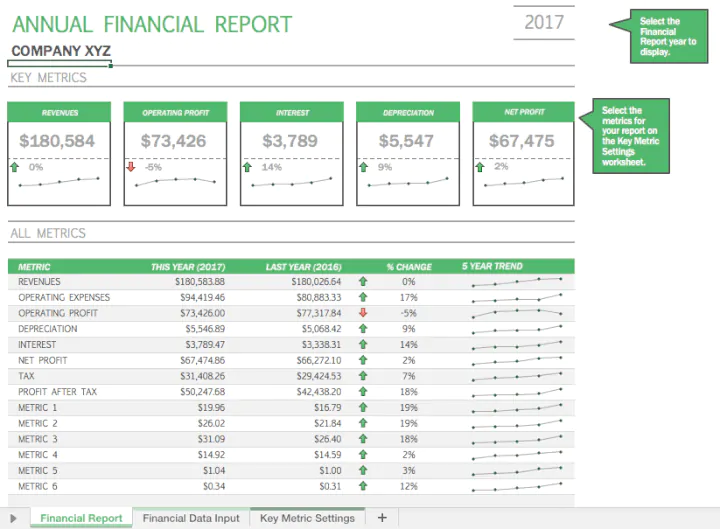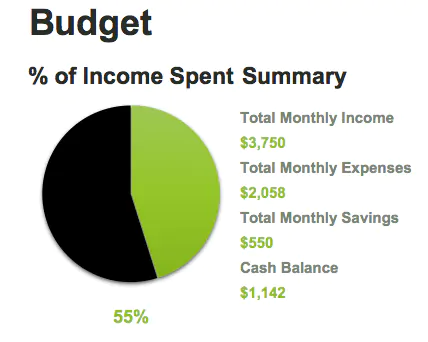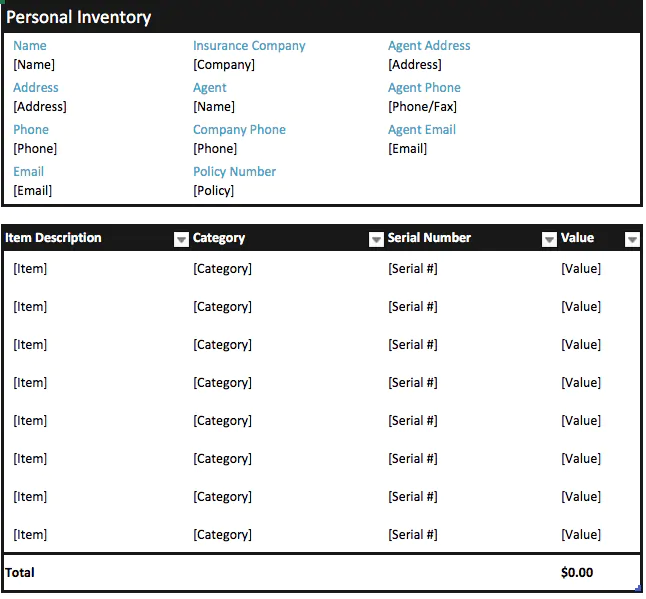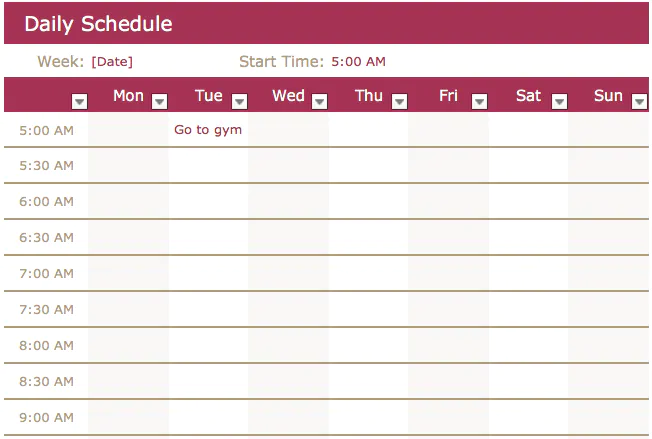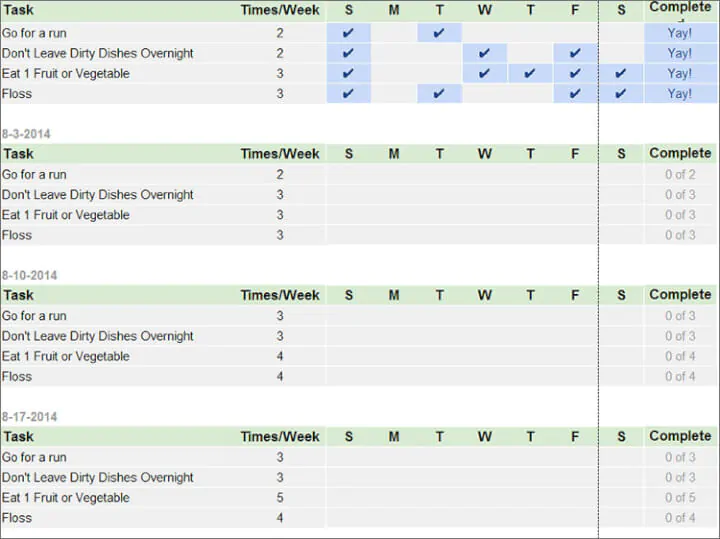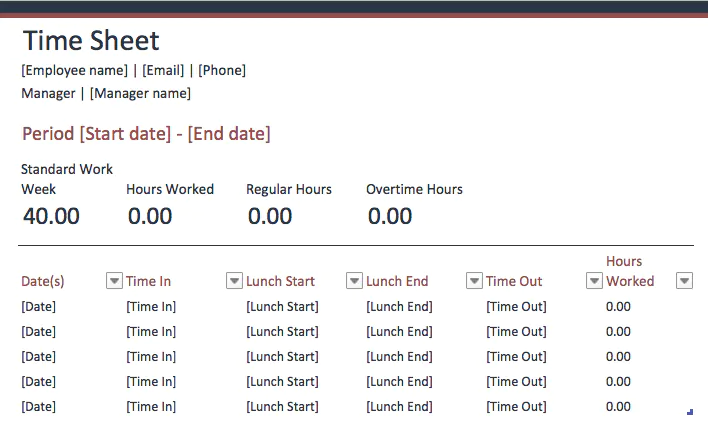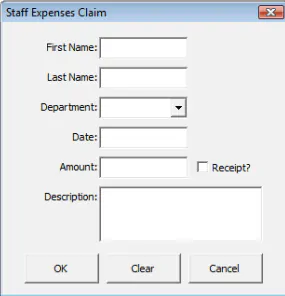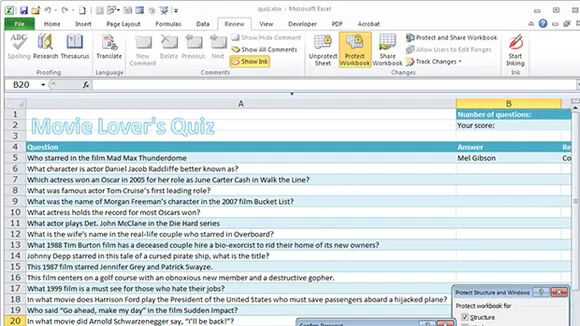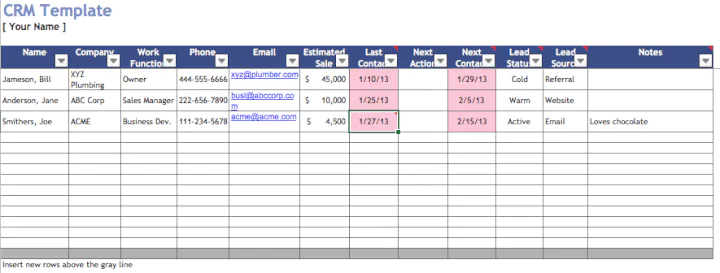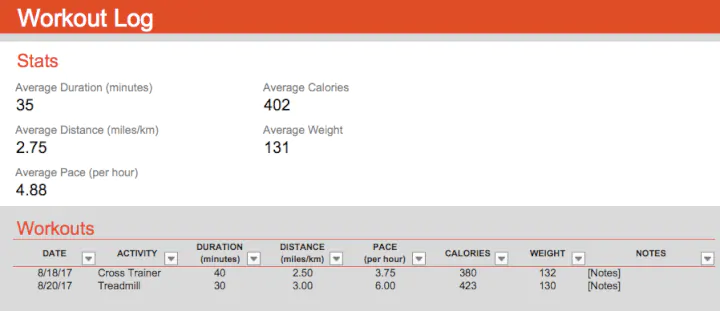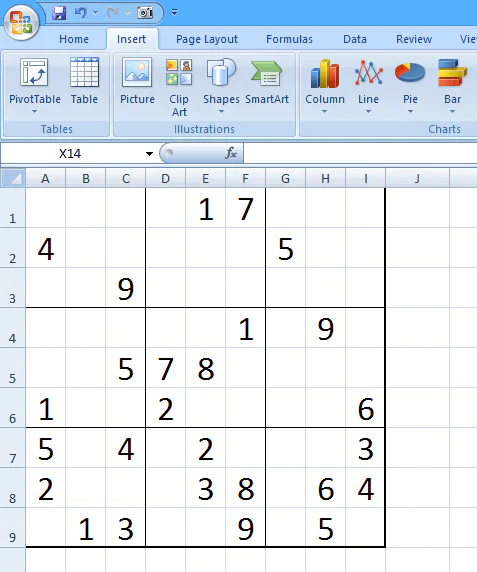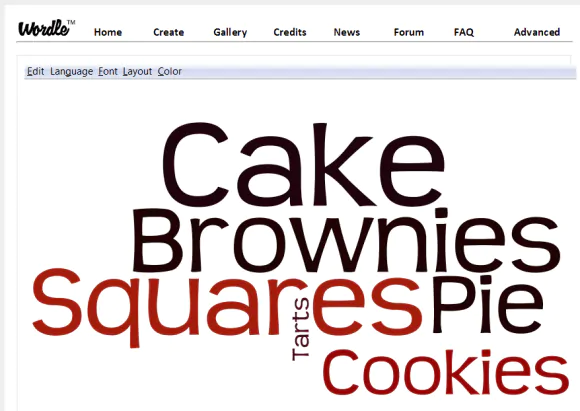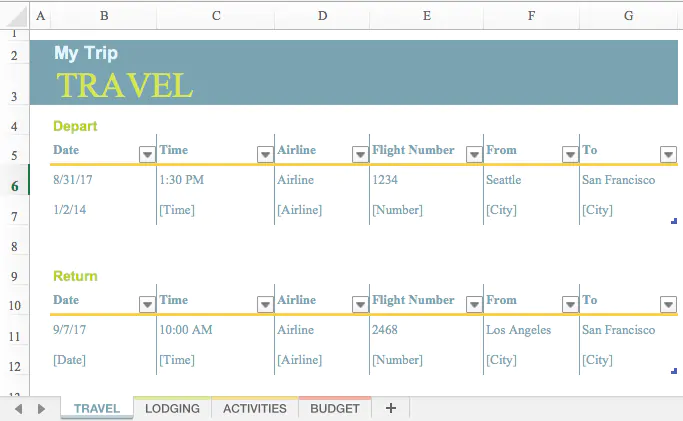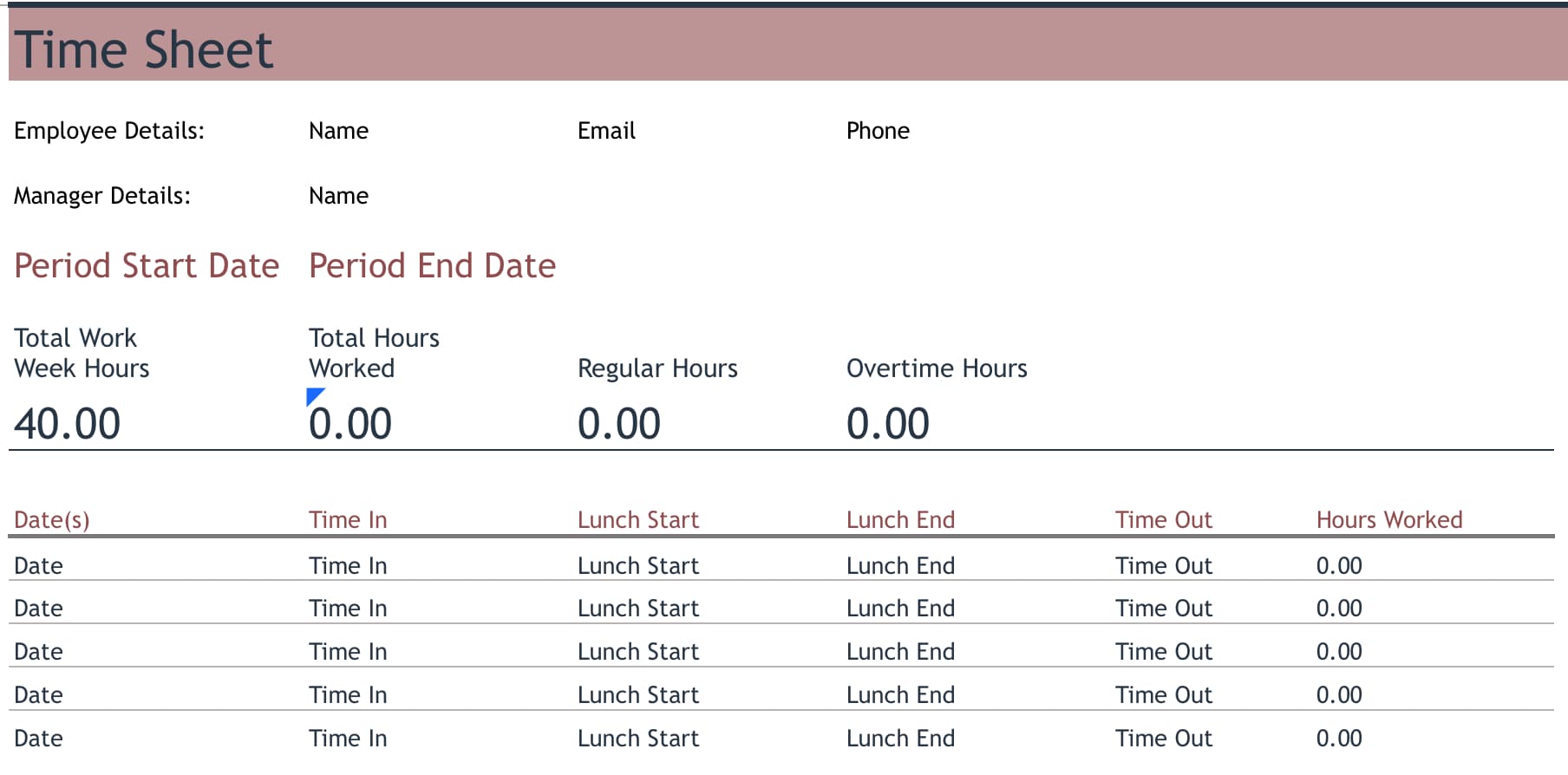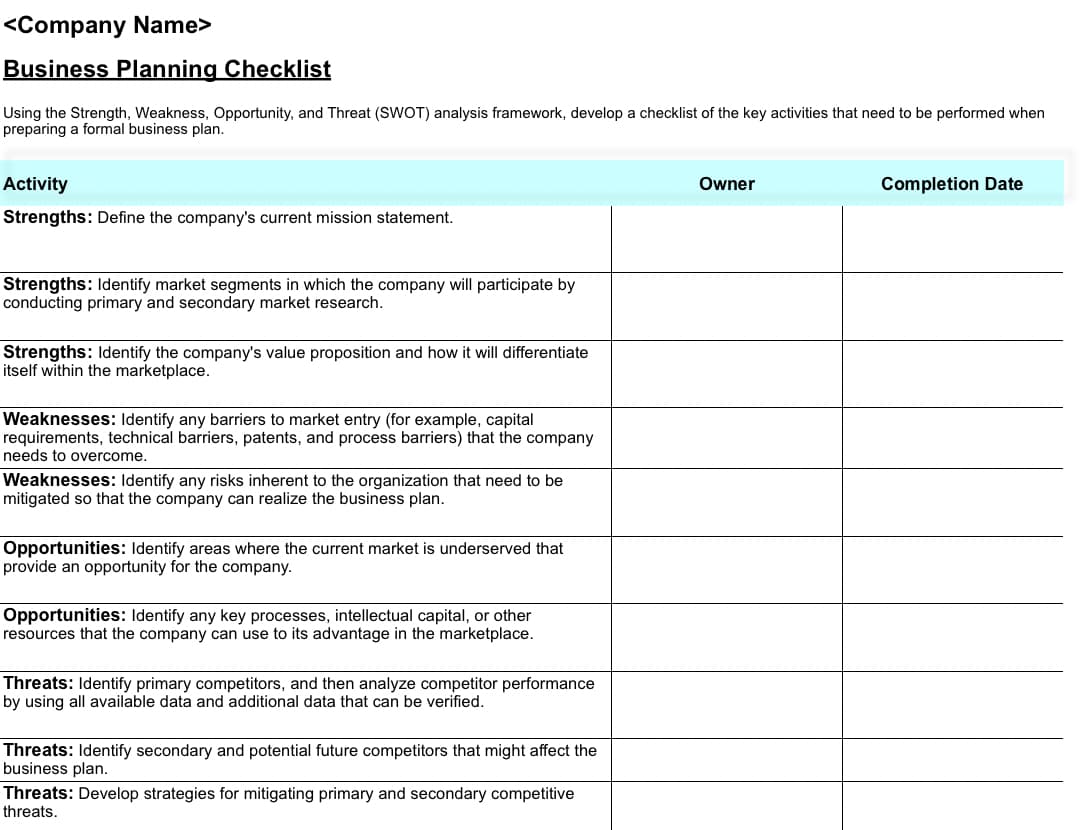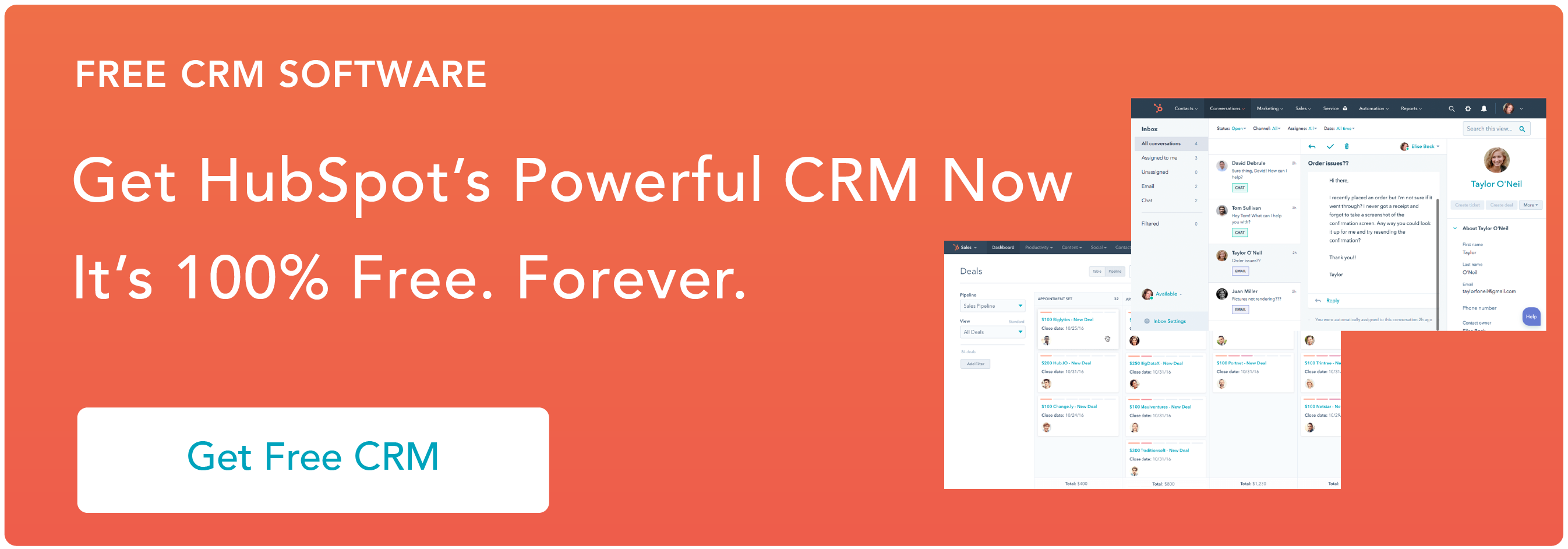
If you’re looking for a way to streamline your business, then using Excel is up there as one of the best options. It’s a powerful tool, and most of us have probably used Excel in business before as employees or business owners.
One of the main reasons to use Excel for business tasks is because it saves time and money, thanks to the numerous options for storing and analysing data along with features that allow you to automate Excel to do repetitive daily tasks.
This blog post will cover a few essential uses for Excel in business while giving you an overview of why this software is so important and useful.
The Importance Of Excel In Business
Released in the early 1980s, Excel’s first version enabled users to step away from manual programming of macros and move towards automated Excel processes. The application has developed vastly since then to support graphs, charts, and histograms that can either be embedded in the spreadsheets or added as a stand-alone article.
Microsoft Excel’s feature-rich design means it’s used for a variety of purposes worldwide. Millions of companies use the software every day so the importance of Excel in business is not to be understated.
The reason for MS Excel’s growth in popularity is its user-friendly simple to use interface; this interface enables users to take control and perform tasks quickly and efficiently. Many employers now require candidates to have Excel skills, and skills in the wider offer suite so listing Excel skills on your CV is a must if you’re job seeking!

Learn how you can use Excel for Business & Financial Modelling with this practical guide.
What Is Excel Used For In Business?
MS Excel is used for a range of purposes in a business including accounting, stock management, sales reporting, product information management and automation. So, if you’re wondering why Excel is so important, it can power a whole business!
The multiple uses of Excel in business make it one of the main reasons businesses use Excel every day. We wanted to explore this further and came up with 7 of the most common examples we come across that demonstrate the use of Excel in business.
1. Using Excel For Managing Product Information
If you’re running an eCommerce business, you know how important maintaining accurate and up to date product information is in generating online sales, reducing returns and winning repeat business.
One of the main barriers that can prevent complete and accurate product information is the platform on which your website is built. WordPress, Magento and many more aren’t optimised to manage large amounts of data in the backend easily. This is where Excel comes in.
Almost all websites will give you the option to export and import data in CSV and XLSX format. Once you’ve exported your data and put it into Excel, you have complete control over your data.
Microsoft Excel Udemy Course – Excel from Beginner to Advanced 2023
Using a range of Excel features you can drill into your data and optimise your product information to fuel eCommerce growth. Once you’ve made your changes, simply import the sheet into your website back end and watch your sales fly.
Need help setting up a product information management spreadsheet? Contact The Excel Experts today!
2. Sales Reporting In Excel
Take a cross-section of businesses in the UK, and you’ll find some using complex and costly software to report on sales, while some will still be using pen and paper!
You’ll find most businesses using a spreadsheet for sales reporting between these two extremes, thanks to its easy to use format and automation capabilities.
Excel, in particular, is one of the best tools you can use to track and report on sales for your business.
With its capability for dashboard creation, automated reports, and integration into other business systems, Excel sales reports bring all your critical sales insights into one easy-to-use sheet that can be read by anyone and shared across the business to communicate and track performance.
3. Stock & Inventory Management Using a Spreadsheet
Because of its versatility and ability to hold thousands of data cells, using Excel for supply chain management & stock management is a great alternative to bespoke and expensive software.
SKU, barcode, stock levels, re-order levels, location, and bin number are just some of the columns you can add to your spreadsheet to maintain an accurate and up-to-date view of your inventory and stock levels.
Stock management spreadsheets can be as simple or complicated as they need to be for your business. One fantastic example of expanding on a simple sheet is the integration of barcode scanning into your document.
Connecting your spreadsheet to a barcode scanner will help you to process your goods quickly, track the delivery and purchase notes and pinpoint orders as they move through your business.
As we mentioned before, Excel can be integrated with many systems and even used as middleware to bridge the gap between systems. If you’re a larger business or have thousands of product lines and are using a SaaS or bespoke software system, Excel is still valuable.
For more information about using Excel for stock and supply chain management, get in touch.
4. Automate Business Tasks With Excel
Potentially one of the least known but most valuable features of Excel in business is automating repetitive business tasks. Reducing tasks to lines of code, companies can use Excel Automation to save time, increase productivity and ultimately increase profits.
Excel automation usually needs to be set up by specialists who know VBA (Visual Basic for Applications). However, the benefits your business will gain from automating tasks will far outweigh the costs of putting automation in place.
If you’re interested in exploring the possibilities of automating some of the tasks in your business using Excel, contact one of our VBA and automation specialists today.
We’ll tell you everything you need to know, what’s possible, and the potential savings your business could see.
5. Build Excel Dashboards
Dashboards provide a snapshot of your current business performance so you can make data-driven decisions about the future of your business.
Excel dashboards are one of the most essential tools a company can use to visualise figures, turning lines of data into easy to read and shareable graphs and charts.
The range of dashboards you can create in Excel is enormous.
Once you’ve decided which type of dashboard you want to create, you need to make a few considerations to ensure your dashboard displays the data you wish to and is pulling data regularly (which can be done with Excel automation). The key things to think about are:
- How will we import data into the dashboard, and how often?
- How will the data in the dashboard be managed and linked to elements like charts and graphs?
- What’s the best layout and format for your dashboard, and which metrics are most important and need to be front and centre.
In addition to MS Excel, you can use Power BI for business-related data visualisation and reporting. It’s the leading tool for data visualisation and we highly recommend checking out the capabilities if Excel isn’t quite delivering what you need.
6. Use Excel For Accounting
According to an article on Accounting Today, 90 per cent of companies use Excel for budgeting, planning and forecasting operations. Excel is the go-to solution for businesses when it comes to accounting software.
One of the reasons for this the sheer number of formulas and calculations that can be used and automated in Excel for businesses using Excel for accounting.
VLOOKUP, Nesting IF Functions and Conditional IF Formulas are just three of the most valuable formulas companies use to manage and keep track of their accounts.
Additionally, because Excel is so widely used by a range of business types from eCommerce through to accountants, you can be confident that if you’re using Excel for accounting in your business, you won’t have any problems sharing a purchase ledger or invoice tracking sheet with your accountant, in a suitable format.
7. Invoice Creation & Tracking In Excel
Errors when processing orders can have a severe impact on a business, from losing a sale to going bankrupt. That means keeping track of orders is essential, and ensuring you have all the relevant information regarding the order in the same place, such as value and customer details, is a must-have.
Not only is invoice and order tracking in Excel vital for keeping your customers happy this type of report can easily be integrated into other sheets and even dashboards to give you a complete view of your business from the point of sale through to dispatch, delivery and customer service metrics like returns and complaints.
Three of the most common requests that we receive regarding setting up or updating existing invoice and order tracking spreadsheets include:
- Scanning incoming jobs reduce errors and save staff time when it comes to doing repetitive tasks.
- Setting up forms within the sheet so new orders are inputted correctly with all required information.
- Tieing in an invoice tracking sheet with stock management and sales reports to close the loop and consolidate critical business information
Why Excel Is So Important In Business
Using Excel in business is one of the best ways to streamline your processes, organise your data and improve business performance in sales and productivity.
From tracking inventory to automating repetitive tasks, we’ve covered a range of spreadsheet uses in business in this post that you can put in place today to improve the use of Excel in your business.
If you need any help using Excel or would like to discuss an idea with an Excel Expert contact us at info@theexcelexperts.com today.
NEED HELP WITH AN EXCEL PROJECT, BIG OR SMALL?
The Excel Experts can help you or your business complete an unfinished project, integrate web applications, automate tasks, and much more.

Excel. Chances are, that word alone inspires visions of lengthy spreadsheets, complicated macros, and the occasional pivot table or bar graph.
It’s true—with more than one billion Microsoft Office users globally, Excel has become the professional standard in offices across the globe for pretty much anything that requires management of large amounts of data.
But, if you think Excel is only good for making you cross-eyed while looking at a bunch of numbers and financial reports, think again. As Tomasz Tunguz points out, there are tons of uses of Excel in business (and beyond) outside of simple spreadsheets. In fact, the potential uses are seemingly endless.
There’s no way for us to compile a list that captures every one of Excel’s possible applications (even if you were up for reading a War and Peace-sized listicle).
However, in an effort to demonstrate the power and flexibility of everybody’s favorite spreadsheet tool, we’ve pulled together different ways that you could use Excel—both professionally, personally, and just for the fun of it.
Free Excel crash course
Learn Excel essentials fast with this FREE course. Get your certificate today!
Start free course
All about numbers
Of course, the core purpose of Excel all boils down to numbers. If you need to sort, retrieve, and analyze a large (or even small!) amount of data, Excel makes it a breeze.
Here are a few broad categories to keep in mind when it comes to implementing Excel for anything numbers-related.
1. Calculating
Find yourself running the same calculations over and over again? Build yourself a totally customized calculator in Excel by programming your commonly-used formulas. That way, you just need to punch in your digits and Excel will spit the answer out for you—no elbow grease required.
2. Accounting
Budget plans, forecasts, expense tracking, financial reports, loan calculators, and more. Excel was pretty much designed to meet these different accounting needs. And, considering that 89 percent of companies utilize Excel for its various accounting functions, it obviously fits the bill.
Excel even has numerous different spreadsheet templates to make all of those processes that much easier.
3. Charting
Pie charts, scatter charts, line charts, bar charts, area charts, column charts—the list goes on and on. If you need to find a way to represent data in a more visual and digestible way, Excel’s ability to transform rows and columns of digits into beautiful charts is sure to become one of your favorite things about it.
Want more information about the types of charts you can create in Excel? This article is a helpful resource.
Want to learn more?
Take your Excel skills to the next level with our comprehensive (and free) ebook!
4. Inventory tracking
Tracking inventory can be a headache. Fortunately, Excel can help to keep employees, business owners, or even individuals organized and on top of their inventory—before any major problems crop up.
Making a plan
Let’s move on from the numbers—there are plenty of things that Excel can help you plan and organize that don’t necessarily involve endless rows of digits.
5. Calendars and schedules
Need to map out a content calendar for your blog or website? Lesson plans for your classroom? A PTO schedule for you and all of your co-workers? A daily schedule for you or your family? When it comes to various calendars, Excel can be surprisingly robust.
6. Seating charts
From a large corporate luncheon to a wedding, arranging a seating chart can be a royal headache. Fortunately, Excel can make it a total breeze. If you’re a real whiz, you’ll be able to automatically create your seating chart using your spreadsheet of RSVPs. Need help getting this done? This article provides a detailed walkthrough of how you can create a seating chart in Excel.
7. Goal planning worksheet
From professional goals to fitness goals to financial goals, it helps to have something to keep you focused and on track. Enter the beauty of Excel. Using the tool, you can create various worksheets, logs, and planning documents to help you monitor your progress—and, hopefully, cross the finish line.
8. Mock-ups
Excel might not be the first platform you think of when it comes to design. But, believe it or not, you can use the tool to put together various mock-ups and prototypes. In fact, it’s a surprisingly popular choice for creating website wireframes and dashboards.
Getting stuff done
Want to kick your productivity into high gear? Well, Excel can swoop in and save the day with a variety of uses that can help you tackle your tasks and to-dos with ease and organization.
9. Task list
Say goodbye to your standard pen and paper to-do list. With Excel, you can make a far more robust task list—and even track your progress on those larger to-dos that are currently on your plate.
10. Checklist
Similarly, you can create a simple checklist that allows you to tick off the things you’ve purchased or accomplished—from a grocery list to a roster of to-dos for an upcoming marketing campaign.
11. Project management charts
We’ve already touched on the fact that Excel is a total beast when it comes to creating charts. And, this concept holds true when it comes to various charts for project management.
From waterfall charts to manage your team’s progress to kanban style boards (just like Trello!) to keep things organized, there are tons of ways that Excel can help keep your project on track.
12. Time logs
You know that tracking time can be a huge asset to you and your productivity. While there are plenty of fancy apps and tools to help meet that need, you can think of Excel as the original tool for logging your time. And, it still serves as a suitable option today.
Involving other people
Need to collect information from other people? Survey tools and forms are one option. But, rest assured, you can also create your own in Excel.
13. Forms
From simple to complicated, Excel is a great option for creating forms. You can even program various drop-down menus so that users can select their choice from a pre-set list.
14. Quizzes
Trying to test somebody else’s—or even your own—knowledge of a subject? In Excel, you can create a bank of questions and answers in one worksheet, and then instruct Excel to quiz you in another.
Staying in touch
Managing relationships is crucial to your success both professionally and personally. Fortunately, Excel makes it easy to keep in touch.
15. CRM
Need a lightweight CRM to stay top of mind for your customers? You can make one in Excel. And, the best part? Building your own means it will be totally customizable. Sales Hacker also put together a nifty set of free sales excel templates you can use to help get started!
16. Mailing list
Data doesn’t just have to involve numbers. Excel is also great at managing and sorting large amounts of names and addresses—making it the perfect solution for your invite list for that company holiday party or the mailing list for that large promotion or campaign.
Using Excel, you can also mail merge—which makes it that much easier to print address labels and other necessary materials.
You can also apply a similar concept to create things like directories, RSVP lists, and other rosters that involve a large amount of information about people.
Just for fun
Excel doesn’t need to be all work and no play. There are plenty of other fun things you can create using the spreadsheet tool.
17. Historical logs
Whether you want to keep track of the various craft beers you’ve tasted, the workouts you’ve completed, or something else entirely, you can think of Excel as your go-to resource for keeping those things sorted and logged.
18. Sudoku puzzles
Love Sudoku puzzles? As it turns out, you can make your own in Excel. Or, if you find yourself stuck on a particularly challenging one, you can enlist the help of Excel to help you get it figured out!
Need help creating the Sudoku solver and generator? This post will get you well on your way!
19. Word cloud
Word clouds might not be the most scientific representations of data. But, they’re a fun (not to mention beautiful way) to gain an understanding of what words are being utilized most. You guessed it—you can create one using Excel. Here’s how to use information from Excel to create a word cloud in Wordle.
20. Art and animations
The capabilities of Excel likely extend far beyond what you’d initially anticipate. In fact, many people have used the tool to create some downright awesome art—from pixelated portraits to animations.
21. Trip planner
Have a vacation coming up? Make sure you have everything covered by creating yourself a helpful itinerary before you pack your bags and head out. Excel even has a handy trip planner template you can use to make sure you don’t miss anything (from your budget to airline information!).
Over to you
This might seem like a lengthy list. But, rest assured, it barely scratches the surface of all of the different things—aside from simple spreadsheets—that Excel is capable of. From lists to charts to design mock-ups, the different uses of Excel are seemingly limitless.
Feeling intimidated? Don’t worry — you can learn Excel online, all at your own pace, and become a spreadsheet ninja in no time.
Do you have something cool you like to create using Excel? Let us know in the comments!
Free Excel crash course
Learn Excel essentials fast with this FREE course. Get your certificate today!
Start free course
Excel: the software that literally everyone totally knows how to use … according to their resumes.
Excel is, first and foremost, a business software. But, it’s hard to pin down what that actually means. How is Excel used in business? Is there a definitive, specific list of tasks and processes it’s used for?
The variety of the software’s potential applications is so wide that there may only be a handful of companies that use it the exact same way. Still, there are some popular uses of Excel that can suit the needs of most companies in need of the platform.
In this article, I’ll discuss some of those applications and give a high-level overview of how to create a business model in Excel.
What is Excel used for in business?
Excel is one of the most prominent, versatile business applications available. It’s a staple in most companies’ business operations, so it’s hard to pin down any sort of definitively universal ways organizations use it. The software can help with data entry and storage, accounting, data analysis and forecasting, compiling checklists, and several other administrative and business-related responsibilities and tasks.
How to use Excel for Business
1. Accounting
Virtually every accounting professional uses Excel in some capacity. In a lot of ways, accounting could be considered the main function of the entire application. Excel supports processes like creating balance sheets, preparing financial statements, and setting budgets. It can also be used for expense tracking, forecasting, and loan calculation.
2. Inventory Tracking
Inventory tracking is central to the success of any business selling a physical product. Though there are systems and applications specifically designed for and better equipped to handle inventory management, Excel is still a reliable, affordable option to facilitate the process.
Inventory management in Excel requires a lot of manual oversight and is, in turn, more prone to human error than its pricier alternatives. So, using Excel for inventory management is usually a better option for startups or smaller businesses still in the process of getting off the ground.
3. Compiling Mailing and Contact Lists
The range of Excel’s applications extends well beyond number crunching; it’s also a great way to store and maintain records of prospects’ and customers’ contact information. It has resources to manage and sort massive quantities of that kind of data for different kinds of projects, promotions, or outreach efforts.
If you’re interested in conducting a personalized mass email campaign, you can use an Excel feature called a Mail Merge to tailor mass emails to address specific contacts you’ve listed in a spreadsheet.
4. Visualizations
Data visualizations allow you to convey the results of any data analysis you’ve conducted succinctly, accessibly, and compellingly. Potential investors, management, or coworkers will have an easier time understanding your data by taking a look at a dot plot or bar graph than they would by wading through a massive sheet of numbers.
Excel sports several different visualization options to make borderline incomprehensible pages of raw data visually appealing and easy to make sense of.
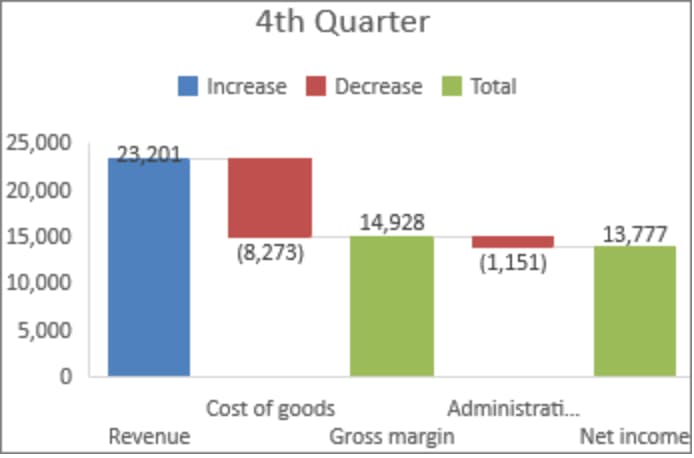
5. HR Management
Excel is an incredibly useful resource for HR managers. HR is a wide-reaching field that covers a broad, eclectic range of responsibilities. The people behind a human resources department have a lot to stay on top of. Their day-to-day could include everything from talent acquisition to conducting training to coordinating company benefit programs.
With so much to keep track of, it’s essential that HR managers remain organized. Excel can do a lot to help that process. It can provide a reliable means for HR professionals to arrange employee work schedules, keep tabs on vacation time, and more.
6. Checklists and Task Lists
These might be the simplest, most straightforward applications of Excel, but that doesn’t mean they’re not useful or worth mentioning. Excel can be used to track different projects’ progress, list and detail specific deals, and keep tabs on individual tasks that need to be covered day-to-day.

7. Time Logs
Tracking employees’ hours is central to maintaining accountability at a company — for both management and employees alike. Excel can be an inexpensive, reliable way to ensure that process is carried out consistently and properly. It’s an excellent way to maintain timesheets. Microsoft even offers downloadable templates specifically dedicated to that purpose.
How can a CRM help?
A CRM can produce valuable data in spreadsheet form. Several CRMs can be integrated with Excel, helping salespeople handle processes like tracking contacts, creating calendar tasks, and planning enterprise events with spreadsheets.
The automation capabilities many CRMs offer also take pressure off of sales professionals by replacing traditionally manual Excel tasks. For instance, HubSpot’s CRM can automatically transfer any information from static contact lists to Excel spreadsheets and vice versa. The same goes for information about new, current, or previous deals.
How to Create a Business Model in Excel
Excel is a great resource for building out a rough model of your business. It’s a solid way to help you track and understand the nitty-gritty, technical aspects of your company, including your business’s legal structure, competitive strengths and weaknesses, and revenue plan.
Creating a business model presents a lot to unpack and make sense of. Luckily, Microsoft provides some helpful templates to make that process a bit easier.
You can find templates for shaping your business structure.
Constructing detailed revenue plans.
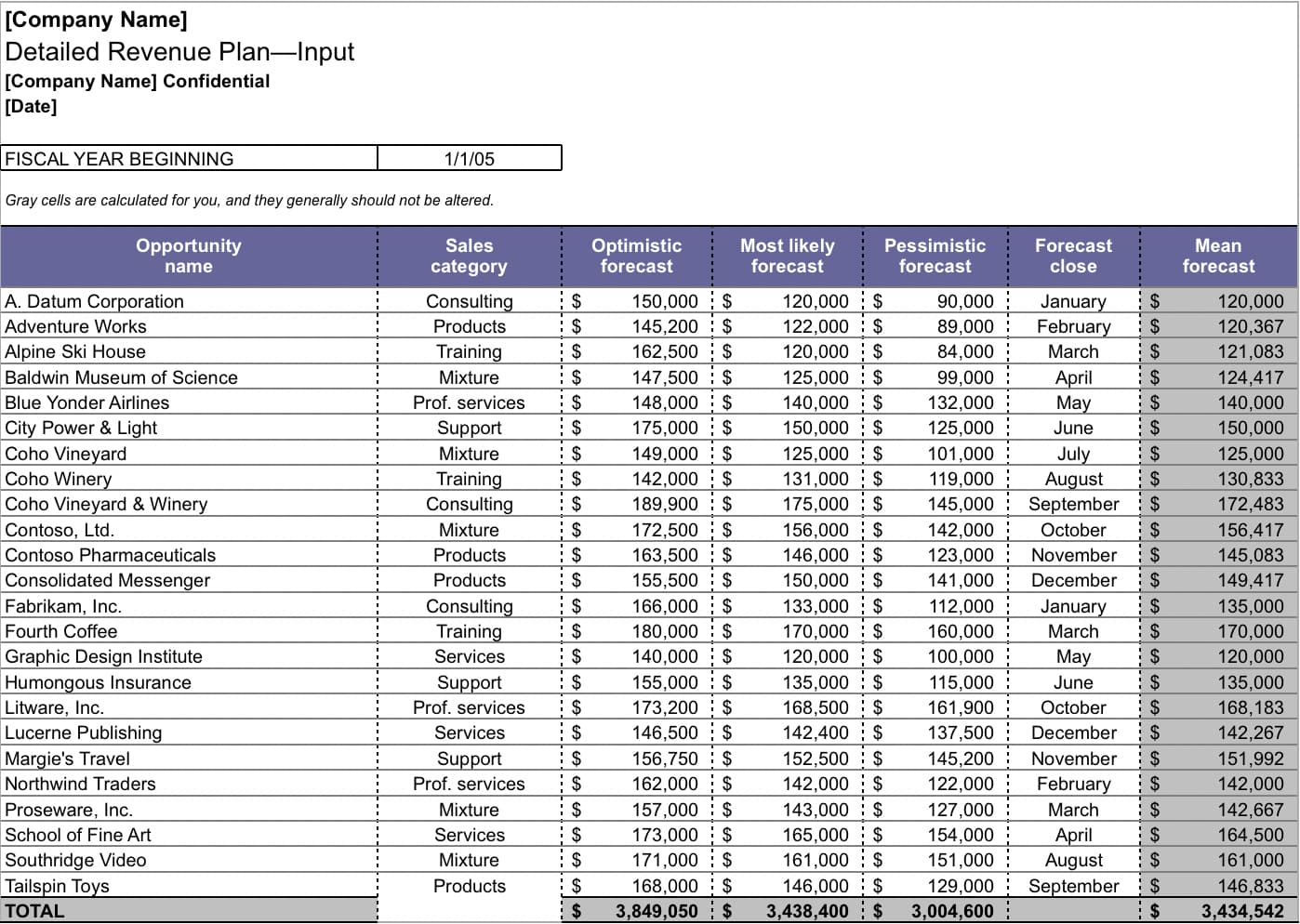
And more.
Excel has a presence in virtually every industry — and for good reason. It’s one of the most universally applicable, dynamic business applications available. No matter what your business does, how many people it employs, and how far along in its development it may be, it still probably has something to gain from some savvy use of the application.
What are the uses of Microsoft Excel in the workplace? The list of ways that businesses use the spreadsheet program is long. But we’ve broken it down to a top 10 list after analyzing data on 800 job ads (using Excel by the way).
The most common business uses of MS Excel are business analysis, managing lists of people, operations management, and performance reporting. The software is also handy for office administration, project management, and managing programs, contracts and accounts.
At a basic level, Excel is using for storing information, analysing and sorting, and reporting. The platform is popular in business because an Excel spreadsheet is highly visual and fairly ease to use.
1. Business Analysis
The number 1 use of Microsoft Excel in the workplace is to improve business performance through analysis. This is essentially using collected data to inform decision making.
Businesses naturally gather data in their day-to-day activities, which may be data on product sales, website traffic, spending on supplies, insurance claims, etc. Analysis is the activity of converting data into something useful to the people who run the business.
For example, you could run a profitability report by day of the week. If the business always loses money on a Sunday, that information management could be used to make a decision to not open on Sundays.
Job examples: business analyst, business planning analyst, business solutions analyst, claims analyst, collections analyst, credit officer, data analyst, data and audience analyst, finance business analyst, investment operations portfolio analyst, junior data analyst, regional finance analyst, senior data analyst, senior finance analyst, senior portfolio analyst.
2. People Management
You may be surprised to learn that one of the top uses of Microsoft Excel in business is to manage people. An Excel spreadsheet is a powerful way to organise information about people, whether they are employees, customers, supporters, or training attendees.
Using Excel, information about an individual person can be stored and retrieved efficiently. A spreadsheet row or column can be used for an individual record that may include information like name, email address, start date, items purchased, subscription status, and last contact.
Job examples: client growth coordinator, client management and administration, client relationship manager, client service manager, client service specialist, employer service consultant, HR administrator, human resources administrative assistant, human resources administrator, human resources adviser, human resources officer, junior HR analyst, reconciliation and payments officer, relationship manager.
3. Managing Operations
Excel is relied on heavily to manage the day-to-day operations of many businesses.
While Amazon uses sophisticated custom software for operations management, Microsoft Excel is an important tool for many smaller businesses (or parts of larger businesses). An advantage of Excel is that it’s relatively low tech, allowing it to be used by many people and without the risk of programming bugs.
Business activities can often involve quite complicated logistics. Inventory flows need to be controlled so that you can keep operations running smoothly – and without overstocking on particular items. That means keeping track of supplier and client transactions, listing critical dates, and managing times and schedules.
Job examples: business operations analyst, data operations manager, graduate program – supply chain and operations, in market supply chain analyst, operational business analyst, operational enablement associate, operational knowledge management specialist, supply chain associate, supply chain specialist.
4. Performance Reporting
Performance monitoring and reporting is a specialised type of company analysis that can be done effectively using Microsoft Excel. For example, many accountants still use Excel (partly because it’s compatible with cloud-based accounting software).
A common way to convert data into a performance report in Excel is to create a pivot table. By inserting a pivot table and linking it to data, you can extra useful information from the dataset quickly. Pivot tables have numerous in-built functions that allow for tasks such as counting and summing certain types of data within the dataset.
Job examples: financial accountant, forecast analyst / sales support, performance analyst, performance analyst – procurement, professional services operations analyst, reporting analyst, reporting development analyst, sales coordinator, sales operations analyst.
5. Office Administration
Underlining the importance of Microsoft Excel, office administrators use Excel to enter and store key administrative data. The same data may be subsequently used for accounting and financial reporting, as well as operations analysis and performance reporting.
Apart from recordkeeping, Excel is useful in office administration for supporting day-to-day tasks such as invoicing, paying bills, and contacting suppliers and clients. It’s an all-purpose tool for keeping track of and managing office activities.
Job examples: administration assistant, administration officer, administration supervisor, administrative assistant, business operations and office manager, junior clerical and administrative officer, office admin manager, office support – maintenance / general duties.
6. Strategic Analysis
With respect to uses of Excel, strategic analysis is where business decisions are closely connected to the data and formulas on spreadsheets. You apply Excel to guide actions such as investments and asset allocations.
As an example, based on an Excel model, you may decide to take out currency insurance. Spreadsheet analysis is designed to inform business decisions in a specific way.
Job examples: asset manager – realty management division, mergers and acquisitions valuations – analyst, membership and campaigns strategist, portfolio administration associate, portfolio analyst, portfolio associate – wealth management, portfolio management officer – asset finance.
7. Project Management
Although project managers have access to purpose-built project management (PM) software, an Excel workbook is often an effective alternative.
Projects are business activities that typically have a budget and start and end dates. Project plans can be placed into a workbook, which can then be used to track progress and keep the project on schedule. In an Excel sheet, you can create a Gantt chart to map out tasks in terms of durations and key dates.
An advantage of using Excel is that you can easily share the project workbook to others, including to people who are unfamiliar with, or lack access to, custom PM software.
Job examples: project analyst, project assistant / officer (IT), project business analyst.
8. Managing Programs
Microsoft Excel is a good platform for managing programs. It can be adapted to handle the specific characteristics of a given program. And, because MS Excel is widely known, program records can easily be managed by multiple people and, when the time comes, handed over to a new manager.
A program is like a project, but may be ongoing and can depend on participation by users. Excel helps managers allocate resources, keep track of progress, and maintain participant records. Pivot tables are useful here because you can quickly create a pivot table to summarize large amounts of data in a simple cross-tabular format.
Job examples: event coordinator, learning and development officer, learning and development coordinator, manager – internships, programs and office coordinator, records and results coordinator, training administrator.
9. Contract Administration
Contract administrators like to use Microsoft Excel because it provides a no-fuss means of recording contract details, including dates, milestones, deliverables and payments.
Many different contract management templates are available, and these can be adapted to suit the particular contract type or stage of the contract lifecycle.
Job examples: building contract administrator, contracts administrator, estimator / contracts administrator, graduate contracts administrator, lease administrator, quote and tender administrator.
10. Account Management
Account managers are generally required to be competent Excel workbook users since they receive and need to maintain customer records. Excel is commonly used in account management since it provides a simple way to share and maintain client files.
The job of an account manager is to nurture relationships with existing clients of the business. Key goals are to achieve customer loyalty and repeat sales. It’s a marketing kind of role and a popular career for MBA graduates.
Job examples: account coordinator, advertising manager, design studio account manager, digital account manager, junior account manager.
Why You Need Excel Skills in Business
If this list hasn’t convinced you already, Excel spreadsheet skills are very useful in the workplace. Your skills can also be easily adapted to other spreadsheets programs such as Google Sheets.
Not all jobs use Excel and those that do are often considered ‘middle skill‘ jobs. However, Excel is widely used. Having good spreadsheet skills gives you the ability to work on all sorts of different tasks. And you can more easily get value out of information that’s being shared in workbooks.
Once you know how to use Excel, you’ll find yourself using it more and more. You can also quickly expand from doing basic tasks such as sorting lists through to writing formulas and creating nice-looking charts and pivot tables. It’s an accessible platform that can be used to do both simple and highly sophisticated business tasks.

Read on to find out how our Excel Services can be utilised in your business.
Excel can be used for planning your business
Firstly, let’s start with an Excel spreadsheet that is necessary for a start up business that needs investment. Indeed, it is advisable to create a business plan and a cash flow forecast before you start a business. Moreover, this will give you an indication as to whether you have a viable business idea. The example here includes cash in hand, projected sales, any loans and projected expenses.

Next, let’s move onto a new business and find out what Excel services a new business needs.
Needless to say, a business start-up will need to implement processes to make their job easier. So let’s look at some common spreadsheets that small businesses use.
Expenditure and Income Tracker — Excel Services
One of the first things you need to think about is how to accurately record your income and expenditure for the business. Importantly, you need to submit your accounts annually.
The options are to buy an expensive accounting package, create a simple Excel income and expenditure tracker spreadsheet or buy an already done for you spreadsheet from Help on Tap.
Thus the third option is by far the cheapest and quickest.
So why not check out our custom made simple income and expense tracker here?
Excel Invoice Template
What is an invoice template?
An invoice template is simply a way to charge your clients for the work that has been done. Moreover, you must ensure all the vital information is on your invoice. Otherwise it may result in a delay in payment. And we wouldn’t want that to happen.
Given that it is an essential part of your business let’s look at the options:
1) An expensive accounting package that will allow you to invoice your clients from within the package.
2) Create your own Invoice or find a free Excel invoice template.
3) Purchase an already done for you invoice or have a customised invoice made.
Hence, Help on Tap has created a range of invoice templates for you to choose from. Whether it’s a gold invoice, blue invoice or one for your dog walking business, contact us and we will be able to create a generic one for you. In addition, you can have a custom made form created by Help on Tap.
What should you include on an invoice template?
- You should include the following on an invoice template:
- Invoice Number
- Invoice Date
- Customer ID (optional)
- Bill to (customer details)
- Quantity
- Services provided
- Unit Amount
- Discount (optional)
- Total Amount
- Sales Tax (if applicable)
- Final Total
Payment to needs to include:
- Full name of your company
- Address
- Contact details
- Website address (if you have one)
- Bank details for the payment to be made to
- Payment terms e.g. 30 days from invoice date
How to create an invoice
To create an invoice you can use a spreadsheet such as Excel, Google Sheets. Alternatively, you can purchase an accounting package that will do all your accounting for you and give you the ability to create an invoice automatically.
Lastly, you can purchase an invoice template through us!
Excel Quotation Template
It is quite normal in industries such as electricians, plumbers and builders to be asked to provide a quotation. Importantly, before any work is started a quotation will be produced that outlines exactly what is to be done and the price. Once the quotation is accepted then the work can begin.
Similarly, to an invoice template, a quotation template can be created in a spreadsheet. And has a similar layout to an invoice, but will not include certain parts.
Client Relationship Management — Excel Services
As your clients are the most important part of your business it is vital to keep accurate records of your clients. To do this you can create an Excel client relationship spreadsheet. But remember to keep it simple. A customer relationship spreadsheet will hold all your customer information plus any contacts that you have had with them. Furthermore, this could evolve over time and more functionality added.
Mail Merges
Mail merge is a word processing feature to allow you to personalise letters with names and addresses from a database or spreadsheet.
For instance, it is a quick way to produce hundreds of personalised letters. Help on Tap can assist you to set up a mail merge with a spreadsheet. However, they are not as popular these days, but are a good way to introduce your business to local businesses.
Alternatively, a mail merge can be done between Google Sheets and Gmail.
Employee Vacation Tracker — Excel Services
As your business grows you will need to track your employees’ holidays/vacations. Consequently, a simple employee vacation tracker in Excel will work really well. At the present time my sister uses this holiday tracking spreadsheet in her nursery. She has roughly 20 employees in her children’s nursery and it works a treat.
Sickness Tracking Software
An Excel spreadsheet is a good tool to record your employees’ sickness. Thus, by tracking the sickness you know when it is time to have a capability hearing with an employee.
Time Tracking — Excel Services
Time tracking in Excel can be useful for individuals or businesses who want to keep track of the time spent on different tasks, projects or activities.
Overall, Excel can be a powerful tool for time tracking, but it does require some setup and maintenance to ensure accurate data entry and calculations.
A Simple Rota
A simple rota is used to show who is working, who is on vacation, what task they are working on e.g. emails, on the phone etc. As a result, you will be able to see at a glance what your employees are doing or whether they are in.
Project Management Spreadsheet
Having a number of projects on the go at once can be a headache. By having a simple project management spreadsheet that can track a number of projects it will make the task management so much easier. You should be able to see at a glance what needs to be done and by whom.
Event Budget/Planning Template
Need to organise an event then a spreadsheet is ideal for this. This spreadsheet will contain all the attendee information, the budget spent and vital information for the event to run smoothly. It will integrate with some project management features.
Excel Services — Charts

Excel charts are used to visually represent data and trends in a spreadsheet. They can make it easier to understand and analyze complex data sets by presenting the information in a graphical format. Excel charts can be used to show trends over time, compare different data sets, highlight patterns or outliers in the data, and communicate information to others.
Some common types of Excel charts include:
Excel charts can be customized with different colors, labels, and formatting options to make them more visually appealing and easier to read.
Pivot Tables
What is a Pivot Table in Excel?
A pivot table is a way to analyse large amounts of data to see specific information such as in the examples below:
Pivot Table Real Life Examples
One such example of a pivot table is a pivot table that shows invoices that are overdue.
Another example is a sum of time worked each month from a timesheet spreadsheet.
One final example is the relative time spent working on each project which may be created from a project management spreadsheet.
These are just a few examples of what Excel services Help on Tap can do for a small business and if you wish to have a spreadsheet created please contact us for a quote.









